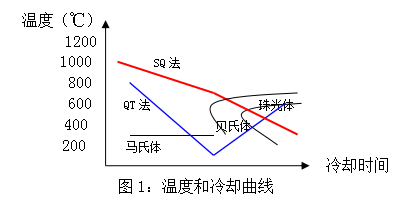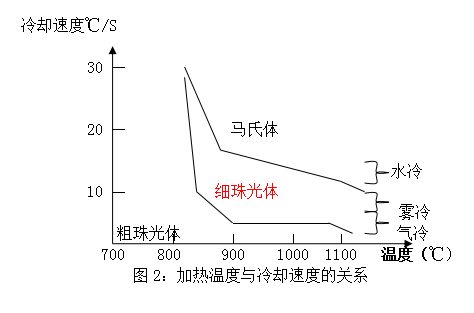1. The heat treatment process of the end of the rail can be divided into two categories according to its principle:
1.1, quenching and tempering process (also known as QT process)
The process is to heat the rail to the austenitizing temperature, and then spray the cooling medium, so that the surface layer of the rail is rapidly cooled to below the martensitic transformation temperature, and then naturally tempered. Its organization is tempered martensite (also known as sorbite), a traditional process that improves the hardness and strength of the rail and improves the fatigue and wear resistance of the rail. However, this process sometimes causes a hardness collapse due to bainite on the end face of the quenched rail head.
1.2. Underspeed quenching process (also known as SQ process)
This process is to heat the rail to the austenitizing temperature, quench with a quenching medium and slowly quench it, and directly quench it into quenched sorbite (without tempering), that is, fine pearlite. Its mechanical properties, fatigue resistance and wear resistance are better than tempered martensite (also known as sorbite) obtained by QT process. The relationship between cooling time and temperature is shown in Figure 1。

2, under speed quenching process, the following description
In order to obtain a high-toughness fine pearlite structure, the condition is such that when the temperature at which the rail end is to be heat-treated reaches 900 ° C or higher, the cooling is performed at a cooling rate of 3 - 10 ° C / S. The quality of the heat treated rail is greatly affected by the cooling rate. To ensure the quenching quality of the rail, it must be ensured that the rail can obtain the required cooling rate from the surface to the inside. According to different steel grades, both spray cooling and compressed air cooling can effectively control the cooling rate and meet the quenching cooling requirements.
The relationship between cooling rate and metallographic structure is shown in Figure 2. It can be seen from Fig. 2 that when the carbon steel rail is cooled from a temperature of 900 ° C or more, the fine pearlite can be obtained by controlling the cooling rate within 3 - 10 ° C / S. If the cooling rate is greater than 15 ° C / S, martensite is obtained. If the cooling rate is less than 3 ° C / S, a coarse pearlite structure is obtained.

Through the above analysis, the whole set of quenching equipment is designed and manufactured according to the requirements of this process to meet the heat treatment quality requirements of the rail.

